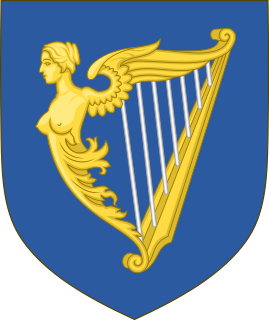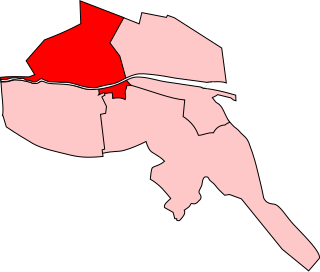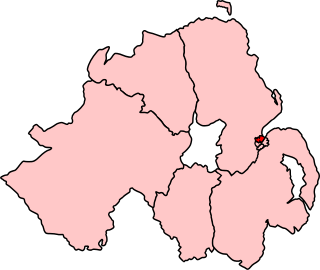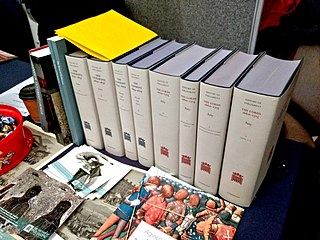Related Research Articles

The Irish House of Commons was the lower house of the Parliament of Ireland that existed from 1297 until 1800. The upper house was the House of Lords. The membership of the House of Commons was directly elected, but on a highly restrictive franchise, similar to the Unreformed House of Commons in contemporary England and Great Britain. In counties, forty-shilling freeholders were enfranchised whilst in most boroughs it was either only the members of self-electing corporations or a highly-restricted body of freemen that were able to vote for the borough's representatives. Most notably, Catholics were disqualified from sitting in the Irish parliament from 1691, even though they comprised the vast majority of the Irish population. From 1728 until 1793 they were also disfranchised. Most of the population of all religions had no vote. The vast majority of parliamentary boroughs were pocket boroughs, the private property of an aristocratic patron. When these boroughs were disfranchised under the Act of Union, the patron was awarded £15,000 compensation for each.

The House of Commons of Northern Ireland was the lower house of the Parliament of Northern Ireland created under the Government of Ireland Act 1920. The upper house in the bicameral parliament was called the Senate. It was abolished with the passing of the Northern Ireland Constitution Act 1973.

In the United Kingdom (UK), each of the electoral areas or divisions called constituencies elects one member to the House of Commons.

The Northern Ireland House of Commons existed from 1921 to 1973 as the lower House of the devolved legislature of the part of the United Kingdom called Northern Ireland.
Londonderry City was a parliamentary constituency in Ireland. It returned one Member of Parliament (MP) to the House of Commons of the Parliament of the United Kingdom, elected by the first past the post voting system.

In the United Kingdom, a Member of Parliament (MP) is an individual elected to serve in the House of Commons of the Parliament of the United Kingdom.
Cromac, a division of Belfast, was a UK parliamentary constituency in Ireland. It returned one Member of Parliament (MP) to the House of Commons of the United Kingdom from 1918 to 1922, using the first past the post electoral system.
Ormeau, a division of Belfast, was a UK parliamentary constituency in Ireland. It returned one Member of Parliament (MP) to the House of Commons of the United Kingdom from 1918 to 1922, using the first past the post electoral system.
Pottinger, a division of Belfast, was a UK parliamentary constituency in Ireland. It returned one Member of Parliament to the House of Commons of the United Kingdom from 1918 to 1922, using the first past the post electoral system.

College Green, also called Dublin College Green or College Green Division, Dublin, was a UK parliamentary constituency in Dublin. It returned one Member of Parliament (MP) to the House of Commons of the Parliament of the United Kingdom from 1885 to 1922.
National University of Ireland (NUI) is a university constituency in Ireland, which currently elects three senators to Seanad Éireann. Its electorate is the graduates of the university, which has a number of constituent universities. It previously elected members to the House of Commons of the United Kingdom (1918–21), to the House of Commons of Southern Ireland (1921) and to Dáil Éireann (1918–1936).
University of Dublin is a university constituency in Ireland, which currently elects three senators to Seanad Éireann. Its electorate comprises the undergraduate scholars and graduates of the University of Dublin, whose sole constituent college is Trinity College Dublin, so it is often also referred to as the Trinity College constituency. Between 1613 and 1937 it elected MPs or TDs to a series of representative legislative bodies.

Belfast North was a borough constituency of the Parliament of Northern Ireland from 1921 to 1929. It returned four MPs, using proportional representation by means of the single transferable vote.
Antrim County was a constituency represented in the Irish House of Commons until 1800.
Belfast was a constituency represented in the Irish House of Commons until 1800.

The History of Parliament is a project to write a complete history of the United Kingdom Parliament and its predecessors, the Parliament of Great Britain and the Parliament of England. The history will principally consist of a prosopography, in which the history of an institution is told through the individual biographies of its members. After various amateur efforts the project was formally launched in 1940 and since 1951 has been funded by the Treasury. As of 2019, the volumes covering the House of Commons for the periods 1386–1421, 1509–1629, and 1660–1832 have been completed and published ; and the first five volumes covering the House of Lords from 1660-1715 have been published, with further work on the Commons and the Lords ongoing. In 2011 the completed sections were republished on the internet.
References
- "Part II; Parliaments of Ireland". Return of the name of every member of the lower house of parliament of England, Scotland, and Ireland, with name of constituency represented, and date of return, from 1213 to 1874. Command papers. C.69-I. HMSO. 1878. pp. 603–691.
- Johnston-Liik, Edith Mary (2001-11-01). History of the Irish Parliament: 1692-1800; Commons, Constituencies and Statutes. Ulster Historical Foundation. ISBN 9781903688090.